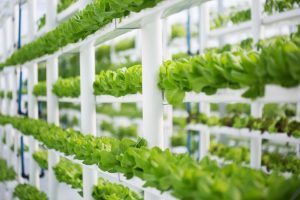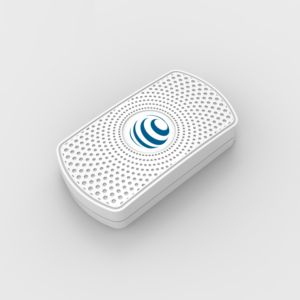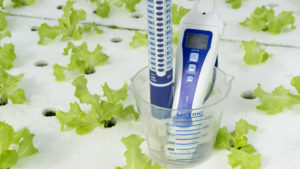Monitoring in Aquaculture
Aquaculture is quickly becoming one of the most common ways the commercial fish industry is sourcing its stock. While fish farming and catching fish in the wild are currently tied, aquaculture is expected to overtake the industry within as little as a decade. With the expense and difficulty associated with wild caught fish, it only makes sense that more fish farms are cropping up across the globe.
With any managed livestock, certain parameters are crucial to healthy, abundant stock. Aquaculture is no different. However, unlike farms raising cows or pigs, fish farms also have to regulate the environment of their animals. In land farms, it’s not necessary to manage oxygen for the animals- it’s already present. For fish, farmers must ensure the water the livestock lives in is perfectly balanced.
Why is Monitoring Important for Aquaculture?
Wild fish can more or less survive in the waters they live in. However, if that water is stagnant, or has a heavy chemical imbalance, the wild fish will die. Land livestock don’t have the same complications. Cows can reliably breathe the air around them, excepting a disaster like a gas leak or toxins in the air. Whether wild or farmed, they don’t need much management for their general environment.
Most people make the mistake of thinking that fish are the ‘easy’ option when it comes to caring for animals. Unfortunately, that’s far from the truth. Fish rely on their keepers for just about every aspect of their existence. If there’s not enough oxygen in their water, they drown (and yes, fish can ‘drown’). If water is too sterile, there aren’t enough beneficial microbes to balance the nitrogen cycle. When water is too hard, fish also suffer.
The fact is, there are numerous different factors that fish farmers have to manage to succeed. Next, we’ll look at the most important factors, or parameters, for aquaculture, and what they mean.
Important Parameters in Aquaculture
Even without any prior knowledge of aquaculture, you probably already know oxygen within the water is crucial. While that is one of the top things you should be concerned about, it’s far from the only one. Many of the most important parameters in aquaculture mimic those of typical aquariums. However, the different levels of each of these parameters vary greatly depending on the species being farmed.
These are the most important factors to manage in aquaculture:
pH
pH stands for ‘potential hydrogen.’ This is actually one of the simpler aspects to manage in aquaculture. pH is a measure that shows how alkaline or acidic a givens substance is. 7.0 is considered neutral, while anything above is alkaline, and anything below is acidic. Most fish species do well with a neutral pH, or one that ranges between 6.0 and 7.5. pH can change based on everything from fish waste to dissolved oxygen, to other organic waste and microorganisms in the water.
pH is easier to manage than other parameters, because there are solutions designed to raise and lower pH as needed. However, it’s important to ensure that only pH adjusters meant for aquariums and aquaculture are used. Other solutions, such as those meant for agriculture, may contain other chemicals that can harm fish.
Dissolved oxygen
Fish breathe by taking air from the water when they move water through their gills. Dissolved oxygen measures the amount of oxygen present in any solution. In aquaculture, it shows you how well your fish are able to take oxygen from the water around them. Special sensors can show you the level of dissolved oxygen in your tank. Increasing the oxygen available to your fish is another fairly simple matter. Water circulation naturally adds more air to the water when the surface is disrupted. When a top flowing filter is in the tank, it works the same way to disrupt the water’s surface and put more air in the water.
However, a top flowing filter isn’t always enough, especially in large tanks with a high fish population. In these cases, aquaculture tanks may need another device to increase dissolved oxygen levels. These are often called ‘bubblers’ or airstones. These connect to an air pump which pushes air through a tube and into the airstone or bubbler, where it releases into the water.
Temperature
Temperature is a simple, yet crucial parameter in aquaculture. As cold blooded creatures, fish rely on proper temperatures to regulate their internal processes. Temperatures that are too high or too low can affect the health of fish, or result in shock or death. Not only that, fish metabolism and as a result, proper growth, depends on proper temperature. Many fish can be categorized as cold water or tropical fish. As you might assume, tropical fish thrive in warmer waters, while cold water fish can tolerate much cooler water.
Aquatic heaters are the most common way that aquaculturists regulate temperature. However, it’s not enough to put a heater in a tank. Farmers must also monitor water temperature to ensure their fish have a healthy environment. While underwater thermometers are a traditional tool to measure temperature, special temperature sensors are more accurate and reliable. .
Ammonia (NO4-)
Ammonia levels are a critical tipping point in the health of any aquarium. This compound can destroy a huge crop of fish if there’s too much saturation in the tank. Unfortunately, it can also be one of the most difficult parameters to manage in aquaculture. Ammonia levels can rise rapidly (also known as an ‘ammonia spike’). This ‘spike’ can happen within the period of a single day. When it goes undetected, it can create a spiral of unhealthy, unpredictable cycling within the tank. The more drastic the ammonia spike, the more difficult it is to correct. While there are sensors and tests for ammonia, there are only a couple of ways to correct this imbalance. Certain products add beneficial bacteria that can reduce ammonia and nitrates, although these often just convert ammonia to a form that’s less toxic for fish.
Another way of reducing ammonia levels is by changing out some of the tank’s water. Again, this may only have a limited effect depending on how severe the imbalance is. Keep in mind that simply exchanging all the existing water in the tank for new, treated water isn’t a viable solution, as this can also harm fish.
Hardness (GH)
Water hardness is sometimes also referred to as ‘General Hardness’ or GH. Most people recognize the difference between hard water and soft water. Hardness isn’t necessarily a negative thing, although there is a delicate balance of how hard or soft water should be. Not only that, but the ideal levels also vary greatly depending on the aquatic livestock you raise. For instance, most fish do well with low to moderate hardness. Mollusks on the other hand, need moderate hardness at the very least, and do much better with a higher level of hardness.
What makes water hard? There are a few different minerals that affect water’s ‘hardness.’ However, the most important is calcium. The more calcium in a water supply, the harder it is. Like pH, there are commercially produced solutions that can either raise or lower the general hardness.
Nitrates
Nitrates typically come from nitrogen, although in aquaculture, it’s often a result of overfeeding and excess waste products in the tank. Fish naturally contribute to this product with their waste, and the filtration systems often turn the ammonia nitrogen into more harmful nitrates when filtering water. However, filtering water is important, and it can’t be neglected. Without a sufficient filtration system, the water becomes dirty and other harmful chemicals build up. Ultimately, this can harm or even kill fish. Nitrate levels can be tested with dye kits, testing strips, or special sensors that detect the compound.
Salinity
As you might infer from the name, salinity refers to the levels of saline, or salt within a liquid. Salinity is a top concern in aquaculture, especially because different species of fish require different levels of salinity to live. Saltwater fish tolerate high levels of salinity much better than others, which include freshwater species like trout or catfish. Salinity can change quickly, especially if there’s a failure with filtration equipment, or the improper water source is used. Spikes or drops in salinity can harm the overall health of fish, send them into shock, or even destroy an entire cycle of livestock. Because rapid changes in salinity can harm fish and go unnoticed, many commercial aquaculture operations use a special sensor to take salinity readings throughout the day.



